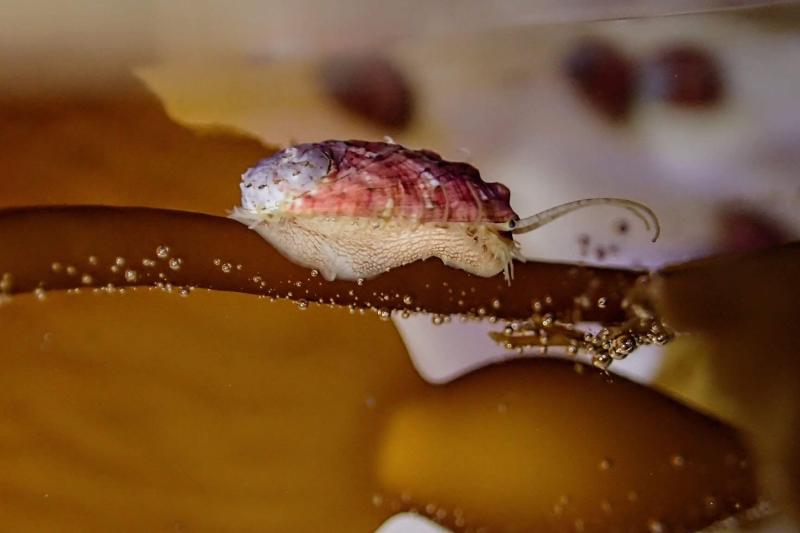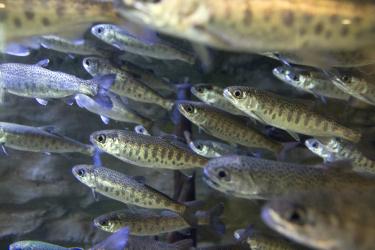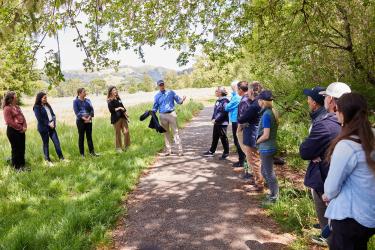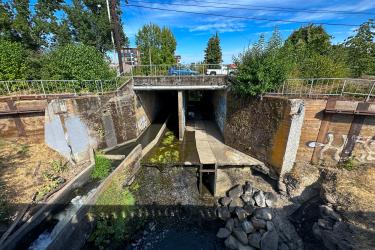What’s it like to work every day to save a species? NOAA Fisheries is working to recover five West Coast Species in the Spotlight. They are among nine species nationally that NOAA Fisheries has identified as facing a high risk of extinction, and where concerted recovery actions can make the difference.
Many of the species once had great economic and ecological value as part of the marine ecosystem. Harvesting of white abalone, for example, once contributed greatly to the California economy, but also pushed the species to the brink.
Melissa Neuman, NOAA Fisheries’ White Abalone Recovery Coordinator, shares with us why white abalone are worth saving, her proudest achievements to date, and where more work is needed.
What’s one thing you want people to know about white abalone?
White abalone can live to up to 40 years and may reproduce successfully only 4–5 times over the course of their lives. They also have the broadest depth range of any abalone species in the world, occurring at depths of 15–200 feet!
Why is the species important to protect and recover?
White abalone are kelp forest architects. They graze on kelp plants that inhabit some of the most productive and biodiverse places on the planet. While this grazing may seem harmful, it actually increases diversity by clearing patches of rocky surface so that multiple kelp species can flourish. The increase in kelp diversity translates to an increase in diversity of fish and other animals that depend on kelp forest habitat.
White abalone are a cultural icon along the Southern California and Baja California coasts. Archeologists have found abalone shells that date back more than 5,000 years, with the shell trade extending across the continent as far east as the Mississippi River. Abalone meat provides protein to people year-round and the iridescent shells became useful tools, beautiful ornaments, and jewelry. This historic cultural importance highlights the potential for the future economic value of restoring this resource.
At its peak, abalone fishing reaped millions of dollars for West Coast economies; white abalone were said to be the tastiest abalone of all the North American species. Successful white abalone recovery could restore the social and economic role these tasty snails once played in our nation.
What are you most proud of?
Our white abalone recovery implementation team, which includes about 20 partners, has placed more than 10,000 captive-bred white abalone on native subtidal reefs since 2019. That provides a foundation for their recovery in the wild.
Where do we have more work to do?
We need to improve reproductive output and maximize survival of captive-bred animals by conducting research focused on building populations that are resilient in the face of climate change and other threats. It is important to expand conservation aquaculture to restore populations in the wild by prioritizing new grow-out space and capacity. Finally, we’re working towards increasing outplanting and monitoring in the United States and Mexico to enhance white abalone populations throughout their range using existing or improved methods and tools.
Species in the Spotlight
We know we can’t do this alone. A major component of the Species in the Spotlight initiative is to expand partnerships and motivate individuals to work with us to get these species on the road to recovery.
We developed a Species in the Spotlight 2021–2025 Priority Action Plan for white abalone that builds on the recovery plan and details the focused efforts that are needed over the next 5 years. The plan lists key actions NOAA Fisheries and its partners can take from 2021 to 2025 to help recover the species. These actions include:
- Improve reproductive output and maximize survival of captive-bred animals
- Expand conservation aquaculture capacity to reach production goal of 10,000 to 25,000 juveniles for outplanting per year through 2025
- Expand outplanting and monitoring programs in the wild
- Develop a shared database for recovery partners
- Develop a comprehensive, multi-institution outreach approach




